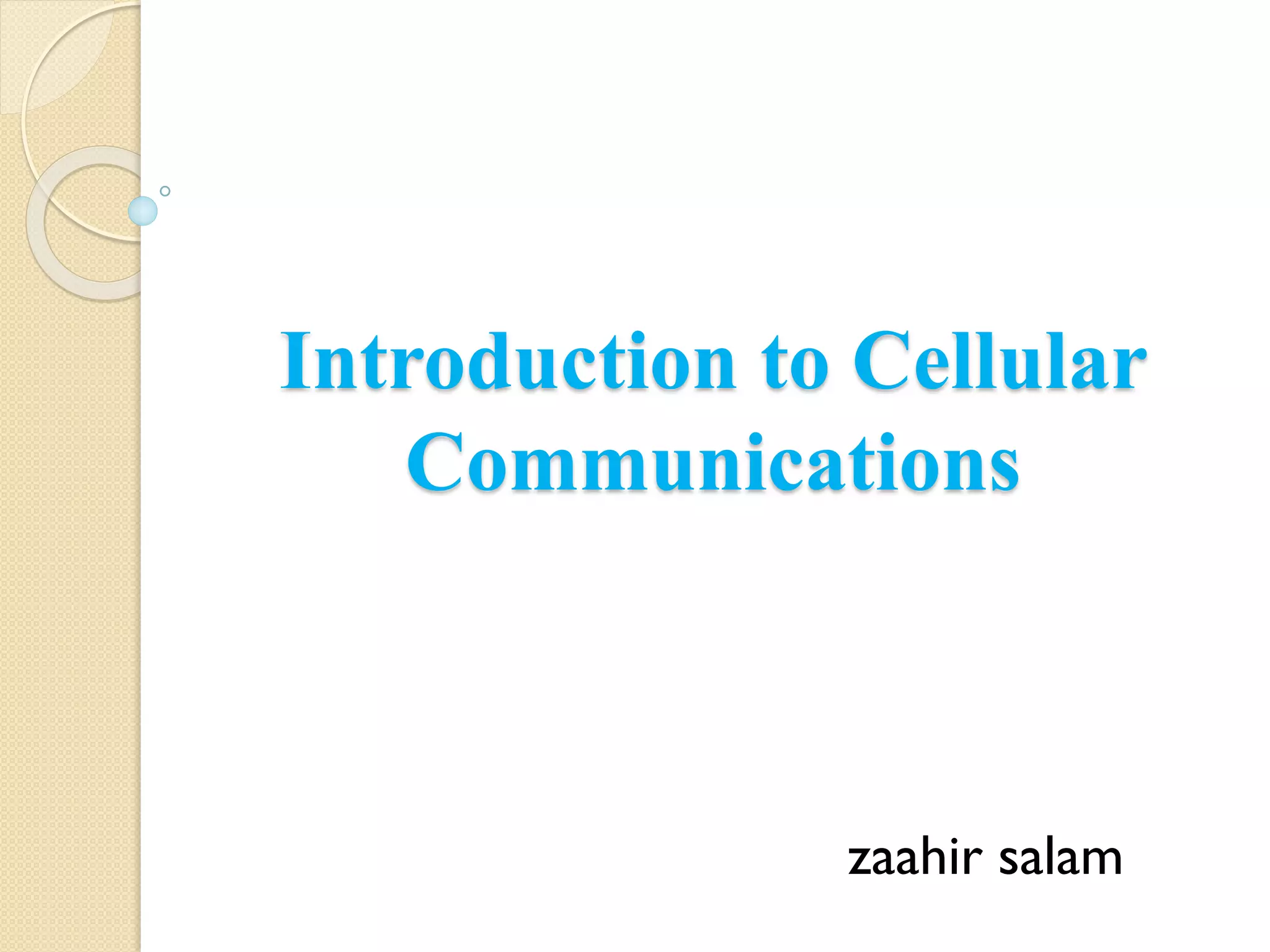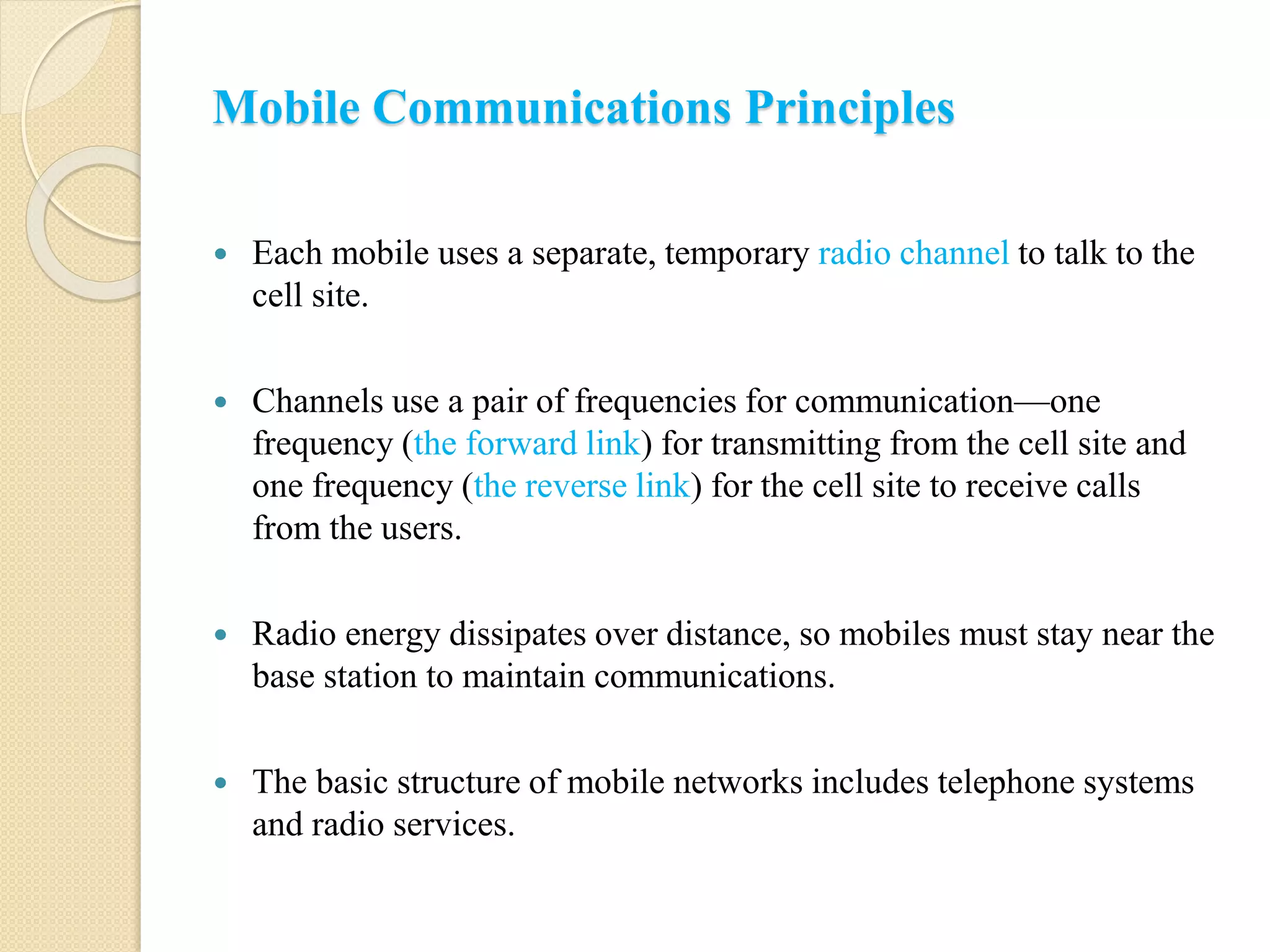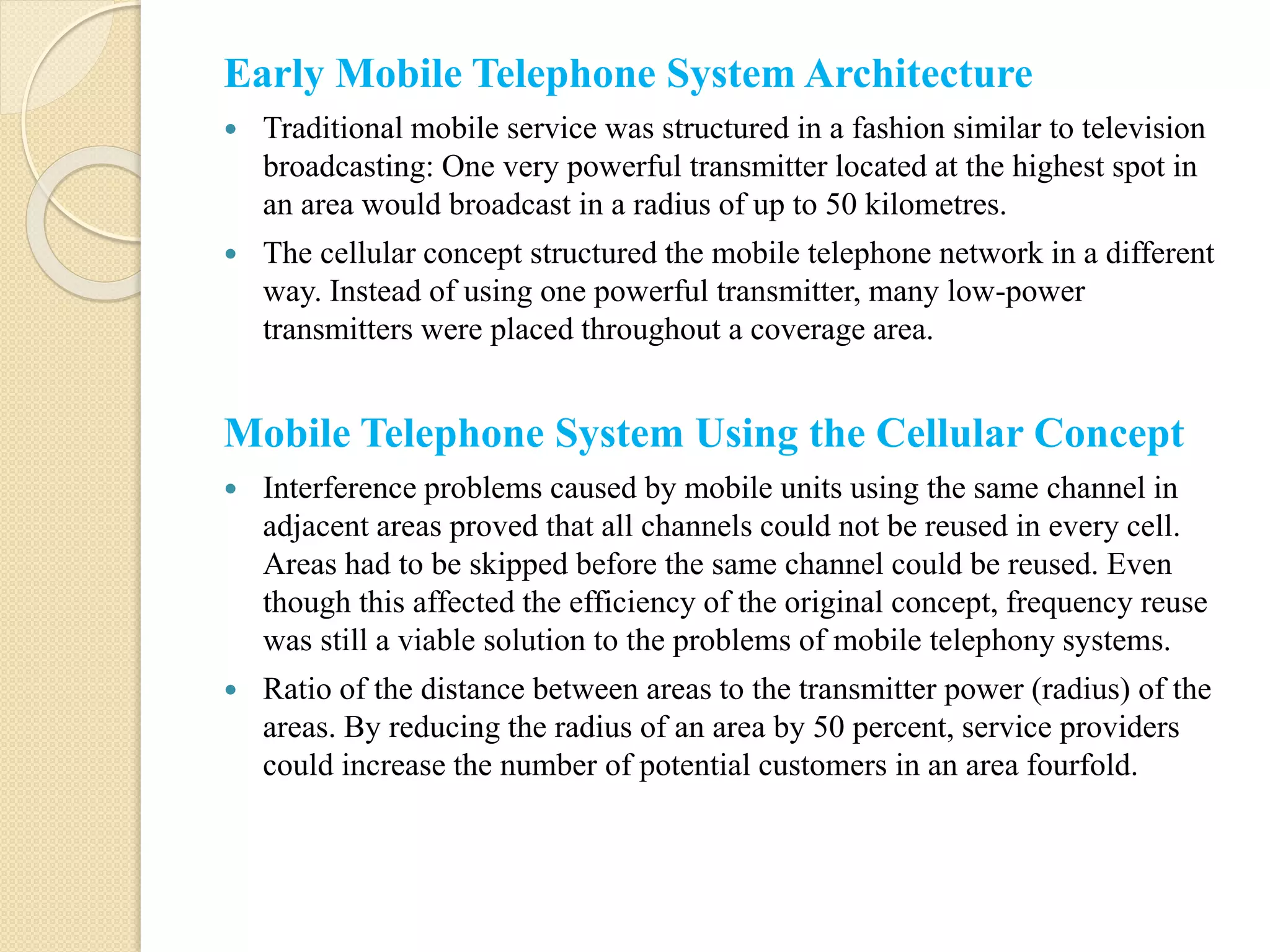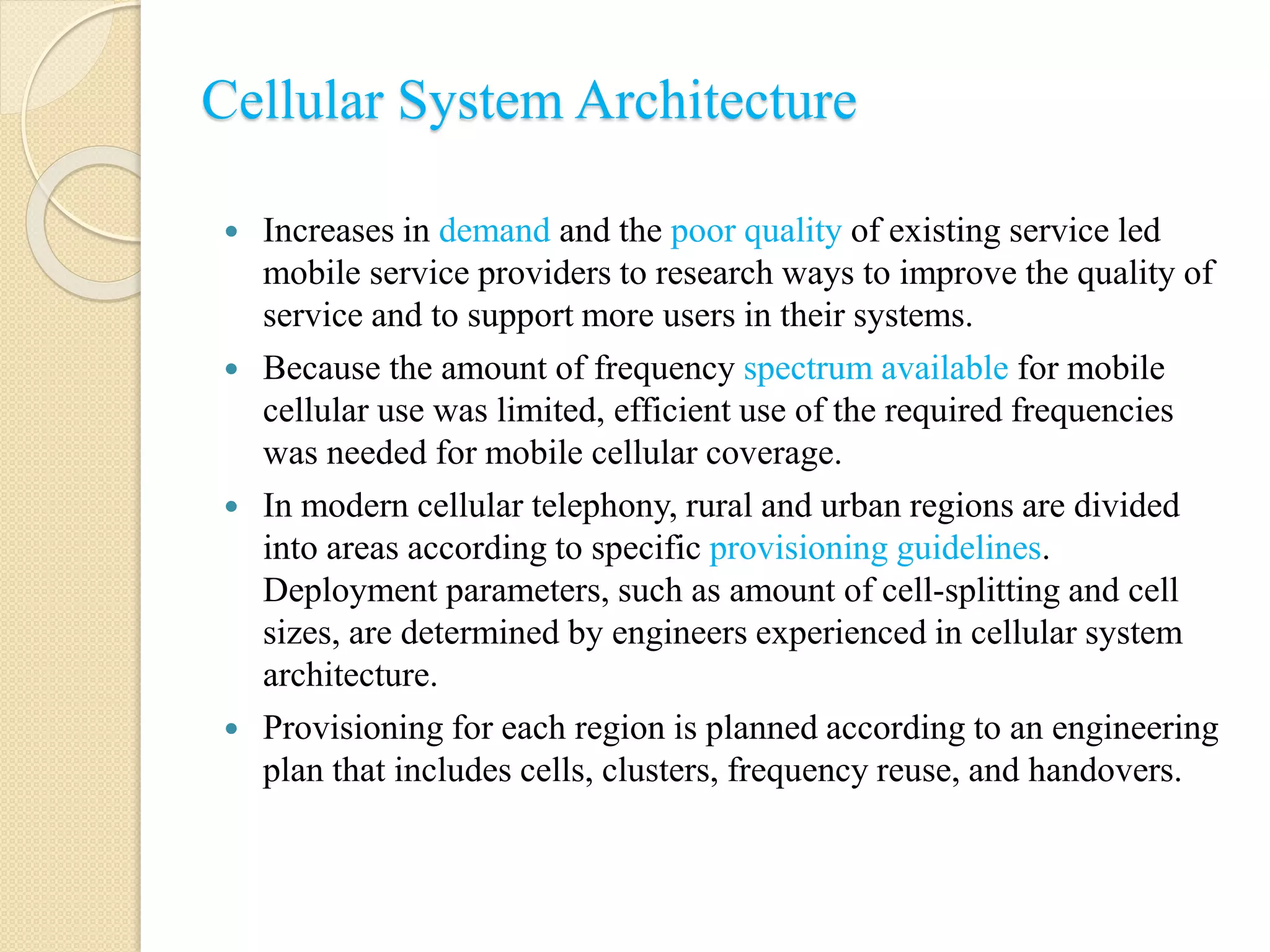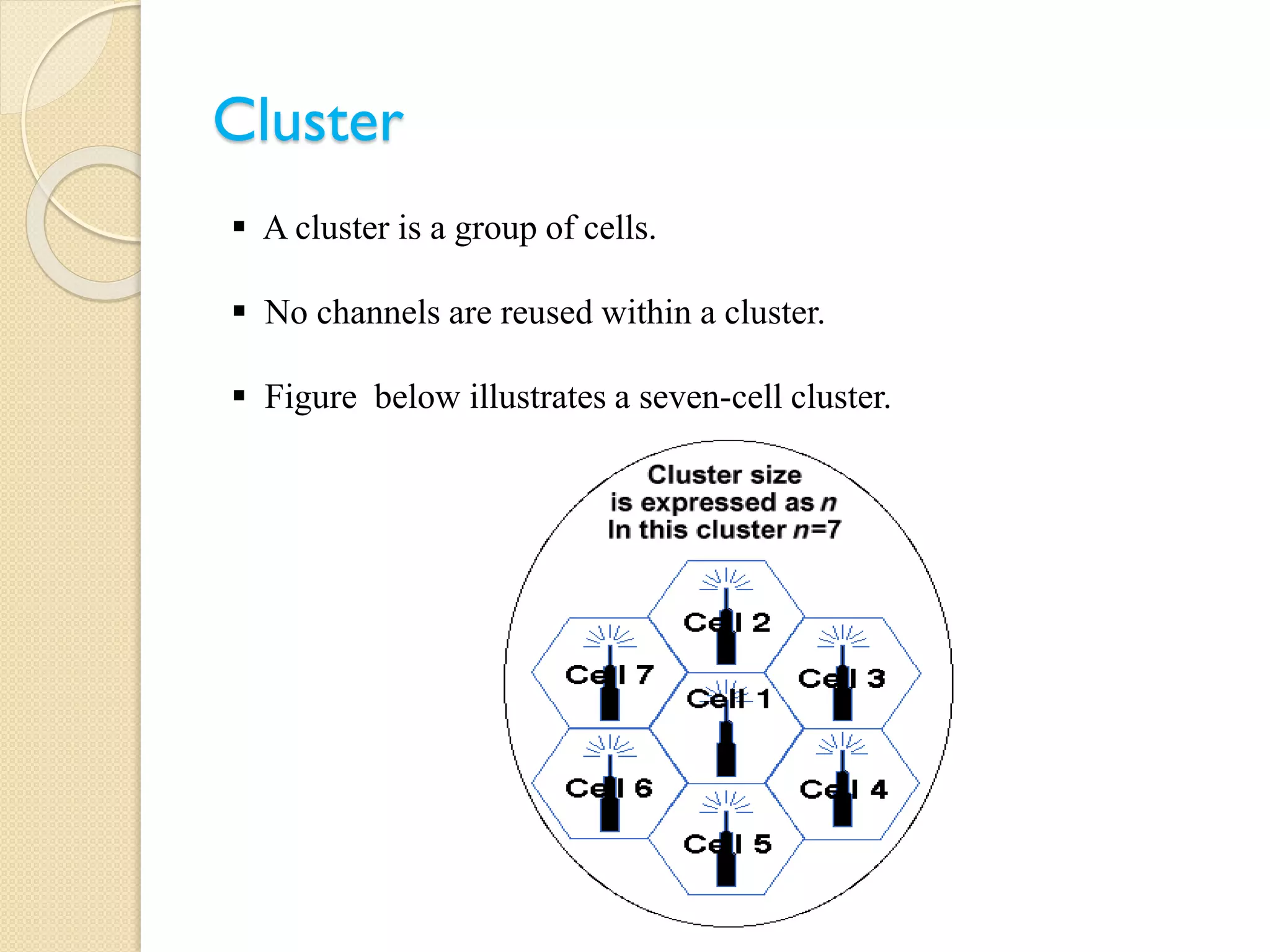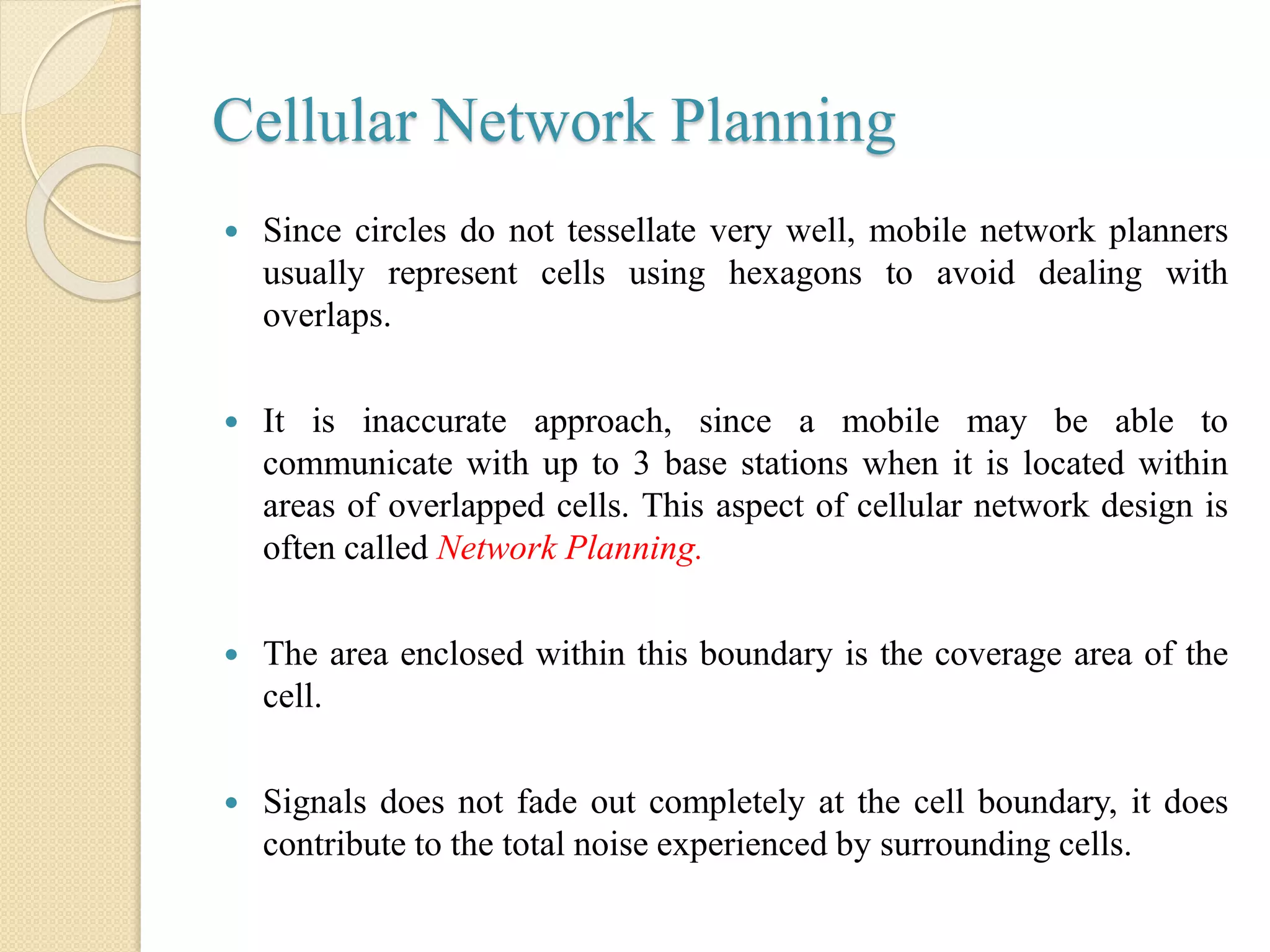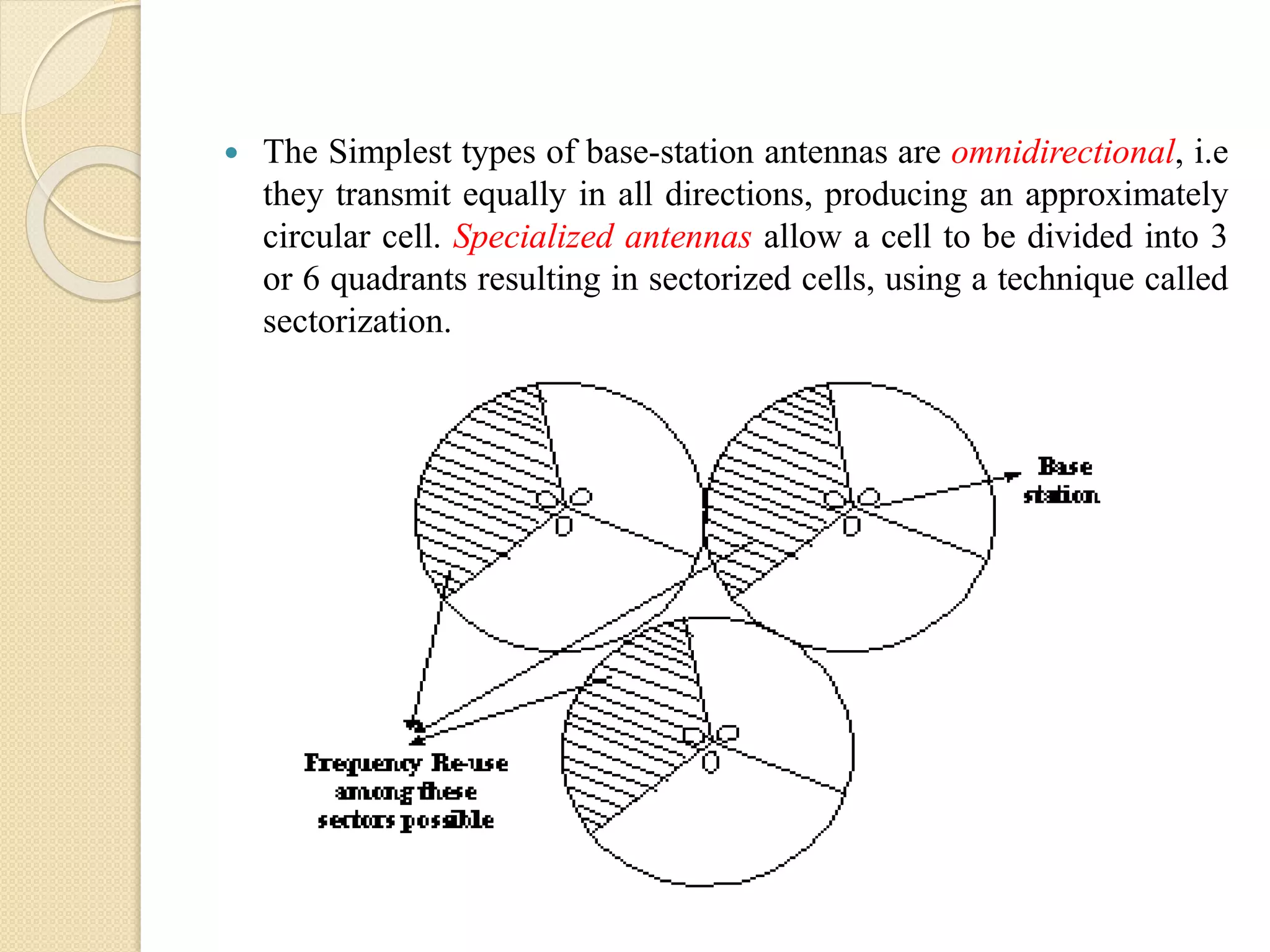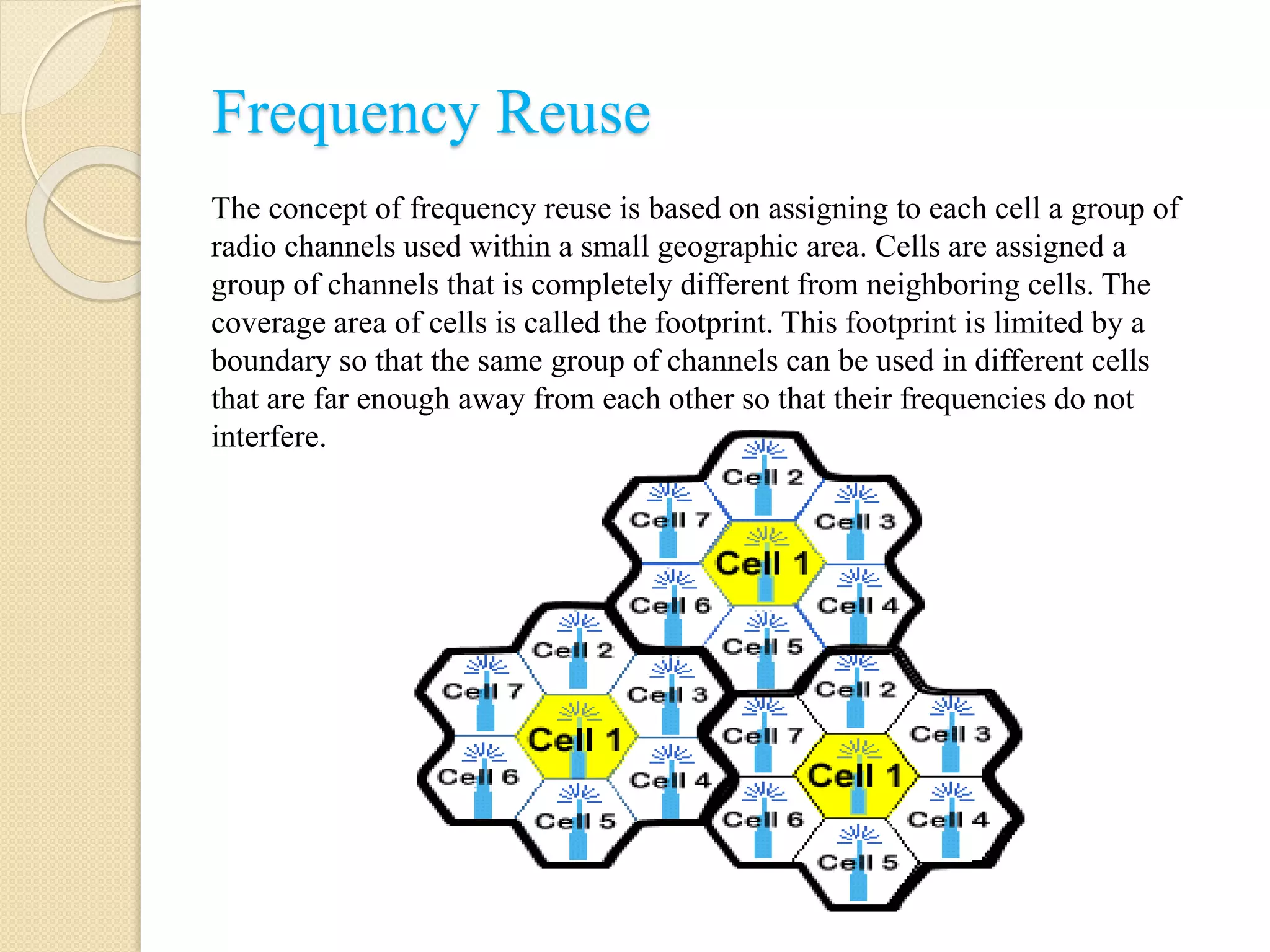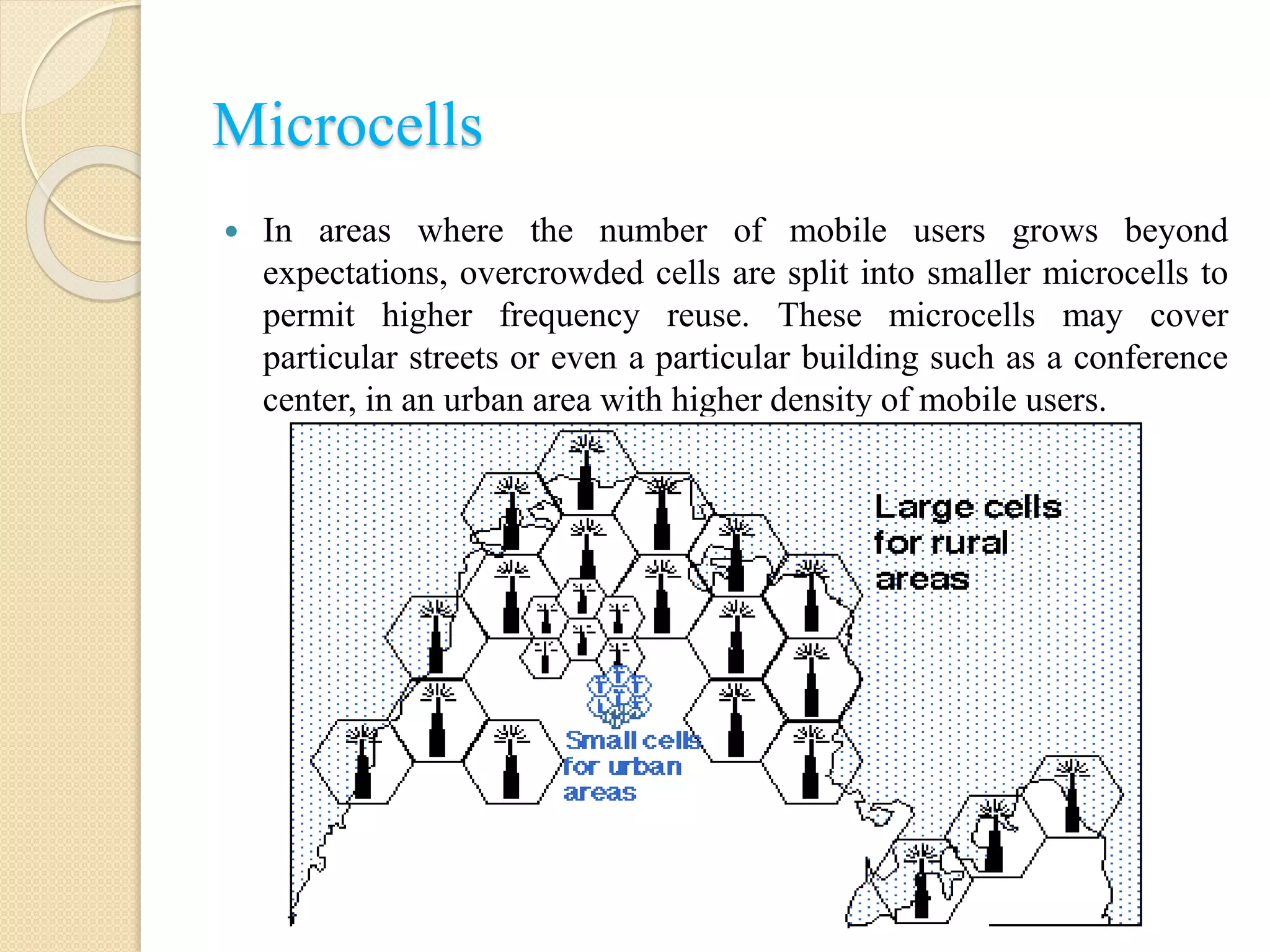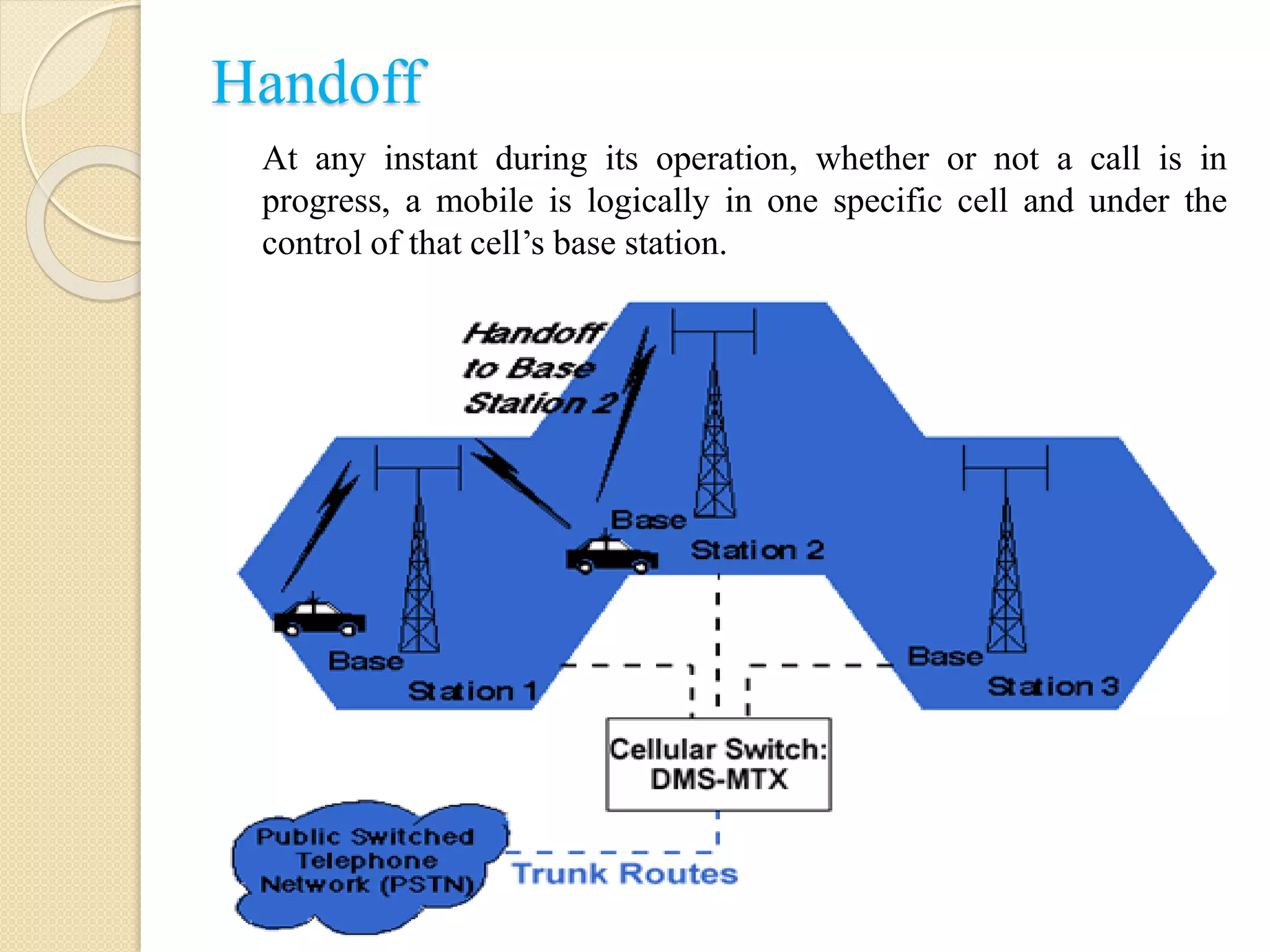This document provides an introduction to cellular communications. It discusses how mobile networks use separate radio channels and pairs of frequencies for communication between mobile devices and cell sites. It also describes how early mobile systems used one powerful transmitter while modern cellular networks use many low-power transmitters and a cellular structure. Key aspects of cellular network design are also summarized such as cells, clusters, frequency reuse, and handovers.
